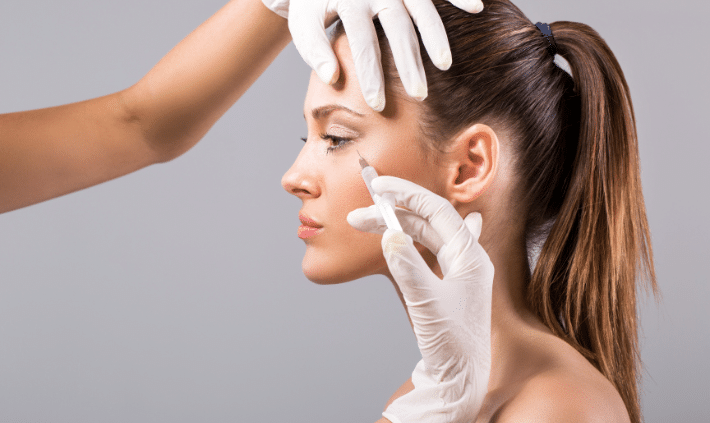Botox treatment has become a popular choice for individuals seeking a youthful appearance. This non-surgical procedure effectively reduces wrinkles and fine lines. Understanding how long Botox results last is crucial for those considering this treatment.
Knowing the longevity of effects helps in planning follow-up sessions and managing expectations. This guide provides comprehensive information on Botox, its effects, and what factors influence its duration.
What is Botox?
Botox, derived from botulinum toxin, is a neurotoxin produced by the bacterium Clostridium botulinum. This potent substance temporarily blocks nerve signals to muscles. When injected into specific areas, it relaxes the muscles responsible for creating wrinkles. As a result, the skin appears smoother and younger.
This treatment is commonly used for cosmetic purposes, particularly for wrinkle reduction. Many use it to treat frown lines, crow’s feet, and forehead lines. However, Botox also has medical applications. Doctors may prescribe it for migraines, excessive sweating, or muscle spasms.
The versatility of Botox makes it a favored choice among those seeking both cosmetic and therapeutic benefits. Understanding its effects and duration can help you make informed treatment decisions.
Factors Affecting Duration of Botox Results
- Type of Treatment: Different areas treated with Botox can affect how long results last. For instance, Botox injected in the forehead may last longer than in the delicate areas around the eyes, such as crow’s feet.
- Dosage: The amount of Botox administered plays a significant role. Higher doses may produce longer-lasting results, while smaller doses may wear off more quickly.
- Individual Factors: Each person’s body responds differently to Botox. Factors such as metabolism, age, skin type, and lifestyle habits can all influence how long the results last. Younger individuals may experience longer-lasting effects due to more resilient skin.
- Injection Technique: The experience of the practitioner can significantly impact the effectiveness of Botox. Adept injectors can target muscles more precisely, leading to better results and potentially longer-lasting effects.
Average Duration of Botox Effects
On average, Botox treatment lasts between three to six months. This timeframe can vary based on several factors. For instance, Botox injected in the forehead typically lasts longer compared to injections around the frown lines. The muscle activity in these areas can affect how quickly the treatment fades.
Studies show that individuals may notice noticeable effects fading as early as three months. However, some may enjoy results lasting up to six months or longer. Regular users often find that their results may last longer over time. This could be due to muscle weakening with continued treatment.
Statistical data suggests that about 60% of patients report lasting effects beyond four months. This statistic highlights the variability in individual experiences, reinforcing the importance of personalized consultations before treatment.
Signs That Botox is Wearing Off
As Botox begins to wear off, several common symptoms may arise. You might notice that fine lines and wrinkles start to reappear gradually. Some individuals report a return of muscle movement in the treated areas. This can manifest as increased movement in facial expressions.
You may also observe that your forehead or frown lines look less smooth. These signs indicate that the Botox effects are fading. As the treatment continues to wear off, you might experience less effectiveness in muscle relaxation. You should expect these changes in the months following your treatment.
Listening to your body and recognizing these signs can help you plan for a follow-up session. Understanding these indicators ensures you maintain your desired appearance without long gaps between treatments.
Maintaining Botox Results
To prolong the effects of Botox, follow some essential recommendations. First, consider scheduling regular follow-up treatments. Consistency can help maintain muscle relaxation and prolong results. Most practitioners suggest returning every three to six months for optimal results.
Next, pay attention to your skincare routine. Use gentle cleansers and moisturizers to keep your skin hydrated. Sunscreen is vital to protect against UV damage, which can accelerate aging.
Adopting a healthy lifestyle can also benefit your skin. Stay hydrated, eat a balanced diet, and avoid smoking. Regular exercise improves circulation, promoting healthy skin. These habits can enhance the longevity of Botox effects and keep your skin looking youthful.
What to Do When Results Fade?
When the effects of Botox fade, you have several options for retreatment. The most straightforward approach is to schedule another session with your practitioner. They can assess your needs and recommend the right dosage.
Consulting with your practitioner is crucial when results fade. Based on your situation, they can help you decide the best course of action. Regular check-ins ensure that your treatments meet your expectations and desired outcomes.
In summary, Botox treatment typically lasts between three to six months, depending on several factors. Understanding the duration and signs of fading effects helps you plan your treatments effectively. Always consult a qualified dermatologist to tailor a plan that meets your needs properly.
FAQs
How soon can I resume normal activities after Botox?
Most individuals can return to their regular activities immediately after treatment, but it is advisable to avoid strenuous exercise for 24 hours.
Can anyone get Botox?
Botox is not recommended for pregnant or breastfeeding women, individuals with certain medical conditions, or those allergic to its ingredients. Always consult with a qualified practitioner.
How many units of Botox do I need?
The number of Botox units required varies by individual and treatment area. A consultation with a qualified practitioner will help determine the right amount.
What should I avoid after getting Botox?
After treatment, avoid rubbing the injection site, lying down for a few hours, and strenuous exercise for 24 hours to ensure optimal results.
Can I use makeup after Botox?
It is best to avoid applying makeup to the treated area for at least 24 hours to reduce the risk of infection and allow for proper healing.

